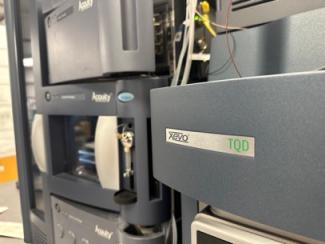
The Mass Spectrometry Facility is part of the Shared Instrument Facilities of the Department of Chemistry. It provides low and high resolution mass spectrometry services to Penn Chemistry and to other research groups throughout the region. The facility is staffed by Borna Saeednia (interim director).
A full list of instruments and services available can be found here: https://web.sas.upenn.edu/ms-facility/instruments-and-services/
Latest fee structure can be accessed here: https://web.sas.upenn.edu/ms-facility/fees/
In order to request training, please visit the following link: https://web.sas.upenn.edu/ms-facility/training/
For more information about the Mass Spectrometry Facility, please visit our website: https://web.sas.upenn.edu/ms-facility/

